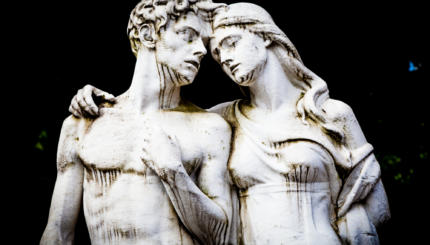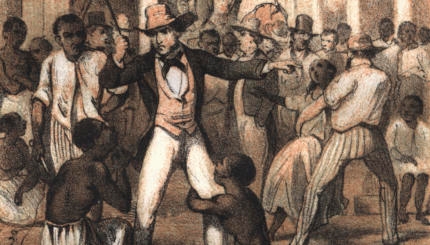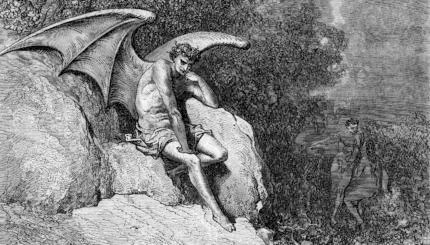By the year 1919, Harry Houdini was the most famous magician in the world. He was a movie star with a vast public following. He delivered stage shows for thousands, and choreographed feats and performances that captured the public’s imagination.
Houdini resisted labeling himself a “magician,” preferring instead the label “escape artist.” His most renowned talents included his ability to free himself from underwater tanks, prison cells, and handcuffs, and to withstand being buried alive. The consummate American showman, he was able to amaze and please crowds of any size despite his height (he stood only 5’5″), his high-pitched voice and his status as an Eastern European immigrant.
An Old Country Childhood
Houdini’s real name was Erich Weisz. Though he often said that Appleton, Wisconsin was his hometown, he was actually born in Budapest, Hungary in 1874. The Weisz family moved to America when Erich was 4 years old, as his father, a rabbi, sought a better job and a better life for the family. Erich’s father served at the Appleton Zion Reform Jewish Congregation for a few years, and then Rabbi and Mrs. Weisz, along with their six children, moved to New York City.
At the age of 17, in order to avoid the heavy-labor factory work that was expected of young men his age and social class, Erich started performing magic tricks. He got a job on Coney Island and adopted the stage name “Harry Houdini.” The name’s inspiration came from Jean Eugène Robert-Houdin, a French magician known as the father of modern conjuring, whom Erich greatly admired.
Before long, Houdini met Wilhelmina Beatrice “Bess” Rahner, a singer and dancer in another Coney Island show. She became his partner, first in his act, and then in life. Houdini was the first person in his family to marry a non-Jew, a fact that, at the time, caused more commotion than when his sister-in-law left one of his brothers for another. The family eventually welcomed Rahner, though the rift was never completely healed.
His Key to Success
Houdini performed common stage tricks and cards tricks before becoming an escape artist. His first big break came with the introduction of the “Challenge Act,” in which Houdini challenged his audience to present a set of handcuffs from which he could not escape. Anyone who succeeded, he said, would receive $100 cash. Nobody ever did.
With the realization of his skills as an escape artist, Houdini became resoundingly successful. He famously freed himself from a straitjacket — in midair, shackled at the ankles and suspended upside down.
In 1926, a fan who happened to be backstage at one of Houdini’s shows asked if it was possible to withstand a punch to the stomach. Houdini answered affirmatively. The student promptly punched him, before Houdini could explain that he first needed to clench his muscles. This may or may not have been the cause of his punctured appendix, which killed him a few days later, on Halloween 1926.
The Legacy of Harry Houdini
Despite his label as the world’s most famous magician, Houdini spent much of his later life disproving magic and supernatural phenomena. In the summer of 1926, Houdini testified before the U.S. Congress against spiritualists and mediums who professed to talk to the dead.
Each year on the anniversary of his death (he is buried in Machpelah Cemetery in Queens, New York), a group of magicians hold a secular memorial service for Houdini and mark his yahrzeit. Rabbi Noach Dally, member of the Magic Fraternity, said,”In 1976 We added el maleh rahahim to the service as well as a broken wand service, a ritual performed to symbolize the passing of a fellow magician.”
Noach
Pronounced: NO-akh, Origin: Hebrew, the biblical character Noah.
Yahrzeit
Pronounced: YAHR-tzite (long i), Origin: Yiddish, anniversary of a death on the Jewish calendar.



